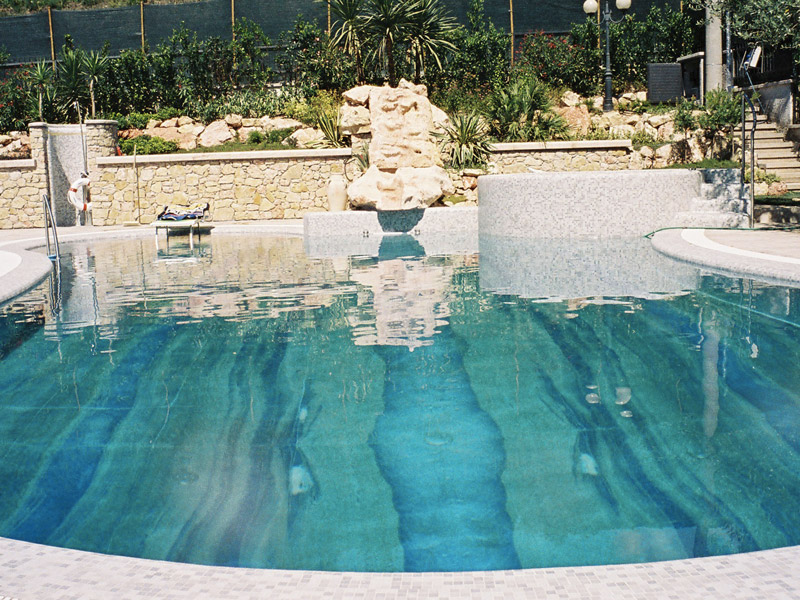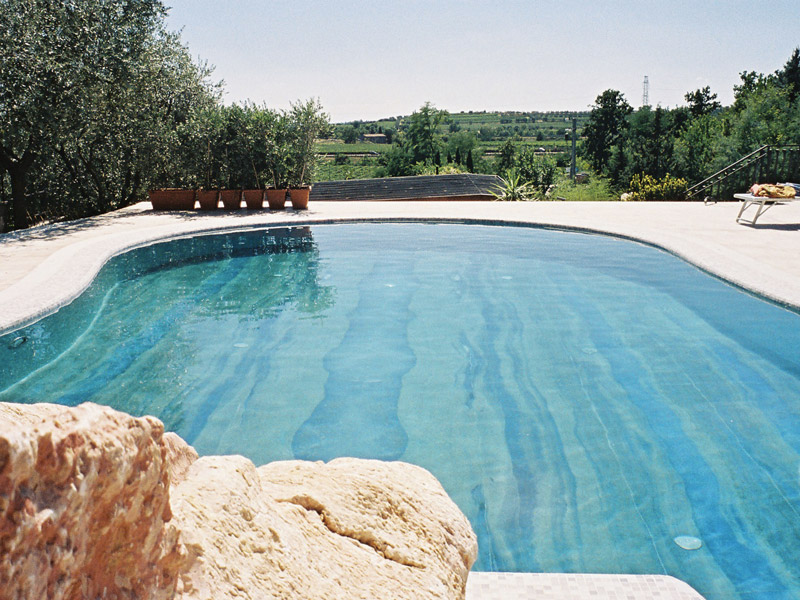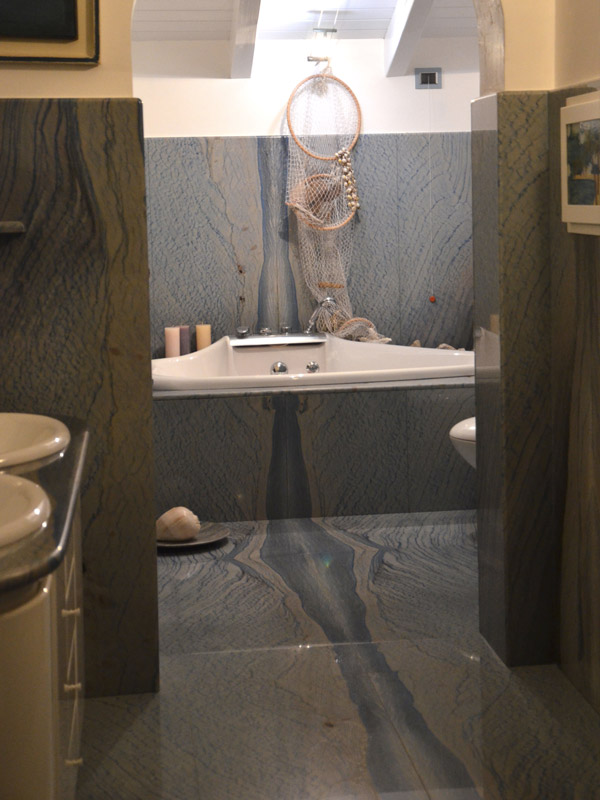The surprising quartzite
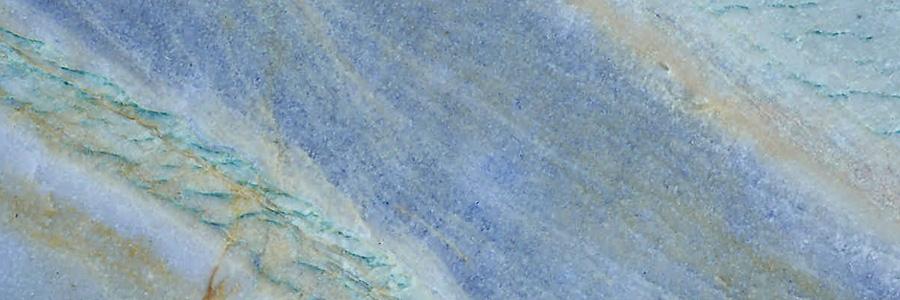
As already mentioned in various articles, there are very impressive and special materials in nature (quartzite, granite, and marble).
In this article, we’d like to talk about the formation and application of two materials that originally come from the same natural stone: Azul Imperial and Azul Macaubas.
The trade name of both materials denotes a very beautiful and spectacular quartzite of Brazilian origin, whose name derives from its blue background colour. This fascinating natural stone is dominated by a mottled and transparent pastel blue.
Characteristics of the quartzites Azul Imperiale and Azul Macaubas
Quartzites are metamorphic rocks, that have undergone strong pressure, high temperatures, and deep chemical and physical transformations in distant geological eras, so that their original aspect is no longer recognizable.
The material is mainly composed of quartz, one of nature's hardest minerals, which gives quartzite an exceptional strength. Quartzites are not only hard, but also breathtakingly beautiful.
Thanks to the minerals, quartzites display numerous colour variations of different colour intensity and due to lots of veins, each slab seems unique and natural.
The transparency of the veins, which is further emphasized by surface finishing, creates visual depth, captures light, and creates a shimmering effect.
About a billion years ago, huge deposits of sand have been deformed into very hard quartzites inside a large and extensive basin in the Brazilian state of Bahia, behind the town of Macaubas - a city that gave the name "Macaubas" to this beautiful quartzite.
Azul Imperial has a wavy blue-green texture.
The blue colour derives from the aluminium silicate kyanite (or cyanite), in the proportion of 5 to 8%.
Other minerals define the remaining veins, which can range from beige to golden and from brown to purple, in short, the design and the colourfulness are of high aesthetic value and hard to describe.
In contrast to other blue stones, Azul doesn't contain sodalite, so there is no problem with discoloration.
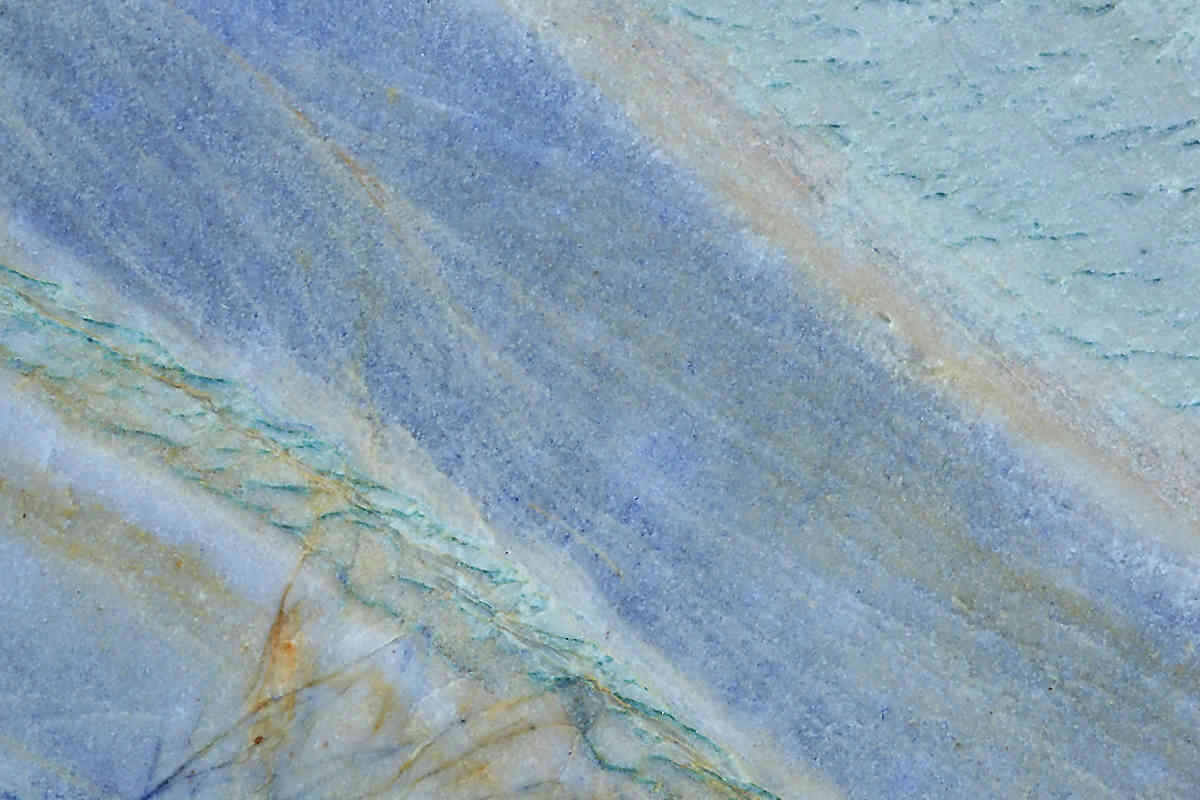
As mentioned earlier, Azul Macaubas and Azul Imperial are similar.
Compared to Azul Imperial, Azul Macaubas is dominated by various shades of light blue and dark blue, which are fading subtly and unevenly, but with remarkable transparency, into grey.
The slabs are also crisscrossed by blue veins that resemble very fine graphic signs, as if a poet had practiced writing with his fountain pen before composing an inspired poem.
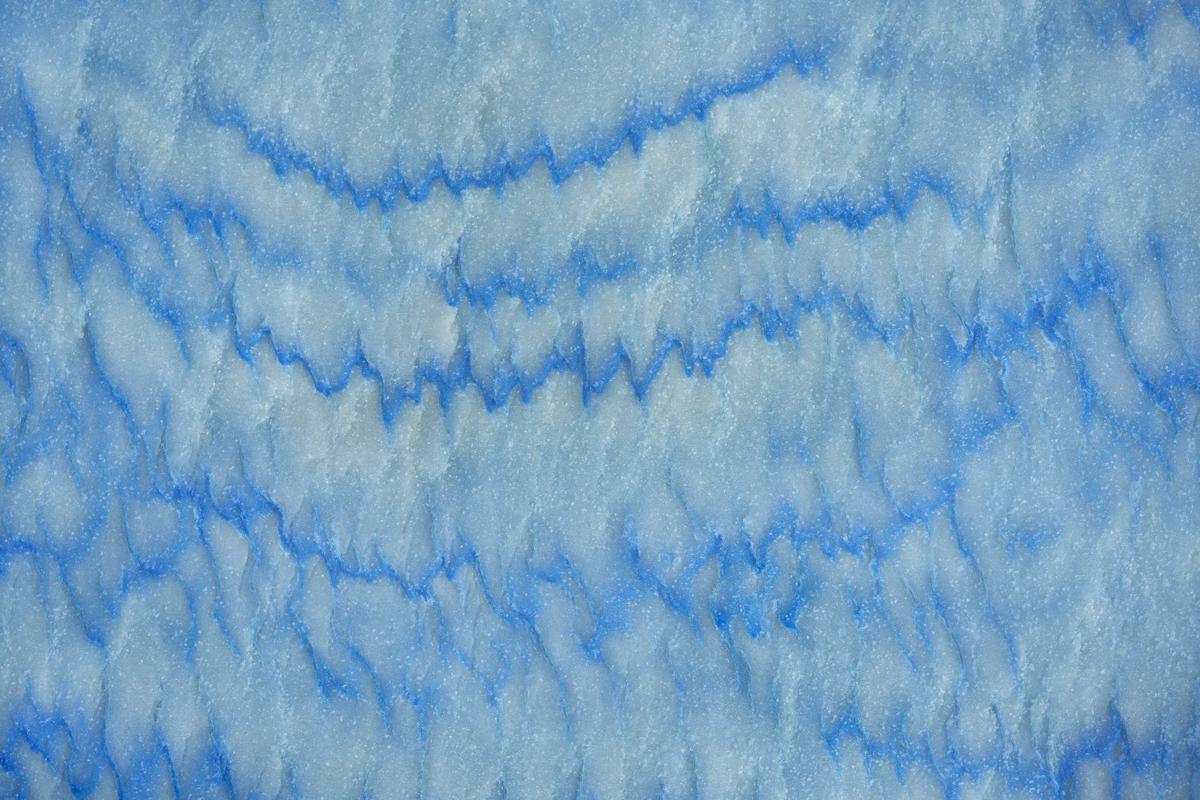
There are other types of quartzites from Brazil, which have similar characteristics like these two blue natural stones, such as Super White, Portoro Quartzite, Crystal Quartzite (more information here).
Application of the quartzites Azul Imperiale and Azul Macaubas in design
Both types of Azul are used in various design and construction projects. Thanks to their beauty and their remarkable hardness, they are suitable for both indoor and outdoor application.
Since both types of materials are very resistant to wear and tear, they are often used for flooring, cladding, and stair steps, but also for kitchen countertops, vanity tops, tabletops, and shop counters in upscale shops.
These quartzites can also be installed in a bathroom as wall tiles, shower trays, vanity tops or washbasins.
Due to their resistance, they are also suitable for outdoor flooring and cladding.
In interior design, Azul Imperial and Azul Macaubas can be used as follows:
- Elegant flooring: the pastel blue colour and transparent veins will complement every space with a touch of sophistication, creating a unique and welcoming atmosphere. Both natural stones are suitable for bedrooms, living rooms, lounges, and any living space where an elegant flooring is desired.
- Kitchen tops (islands or countertops) and in the bathroom (washbasins and vanity tops): thanks to the exceptional strength and durability, Azul Imperial and Azul Macaubas are perfect for much-visited spaces creating an atmosphere of luxury and beauty.
- Wall cladding: Azul Imperial and Azul Macaubas will transform interiors into refined spaces, they are also appropriate for bathrooms, entrance halls or other spaces, as well as for fireplace cladding, if one wants to achieve a strong visual impact.
- Decorative elements: thanks to their natural colour and grain variations, decorative elements made of Azul Imperial and Azul Macaubas will personalise every interior design, e.g. on shelves and niches or even as an art work, adding a touch of originality and elegance.
- Countertops, tops, and cladding in elegant shops and public spaces: thanks to the material’s refined sophistication and hardness, Azul Imperial and Azul Macaubas emphasize the elegance of upscale shops and well-kept, publicly visited spaces (for example, we have seen this material in a jewellery, where it suggests luxury, but also at the fishmonger, where the surface reminds us of the sea resisting well to wear and tear).
Outdoors they are used as follows:
- Flooring: Azul Imperiale and Azul Macaubas are very durable and weather-resistant, so they are an excellent choice for outdoor flooring on paths and terraces, in gardens or swimming pools, as they add class to outdoor spaces.
- Exterior facades and wall cladding: when applicated as cladding on facades or exterior walls, Azul Imperiale and Azul Macaubas will give buildings a unique and elegant look, preserving their beauty even over time while being weather-resistant.
- Landscaping elements: both quartzites are appropriate for landscaping, i.e., to build fountains and low walls, or even to create garden sculptures.
- Barbecue area and lounge area: in barbecue areas or outdoor lounge areas, the high-quality surface of Azul Imperiale and Azul Macaubas will add stunning aesthetics to outdoor live.
Azul Imperial and Azul Macaubas represent a versatile and stunning solution for interior and exterior design. Thanks to their natural beauty, hardness, and durability, these quartzites are of high quality and ideal for all those who want to create extraordinary and memorable spaces.
Their fascinating beauty, high quality, and value turn these quartzites into matching furnishing accessories.
This wavy and ribbon structured material is further enhanced by ‘book-matched’ installation, where impressive patterns are created that emphasise the texture and aesthetic value of the quartzite.
Even though Azul Imperial and Azul Macaubas are among the most elegant natural stones, they are quite easy to maintain: they just need to be cleaned and sealed regularly to preserve their original beauty in the long term.
To sum up, Azul Imperiale and Azul Macaubas are not just simple construction materials.
We are talking more likely of a natural artwork that will add a touch of luxury and sophistication to any space.
>> Discover the Azul Imperial and Azul Macaubas.

